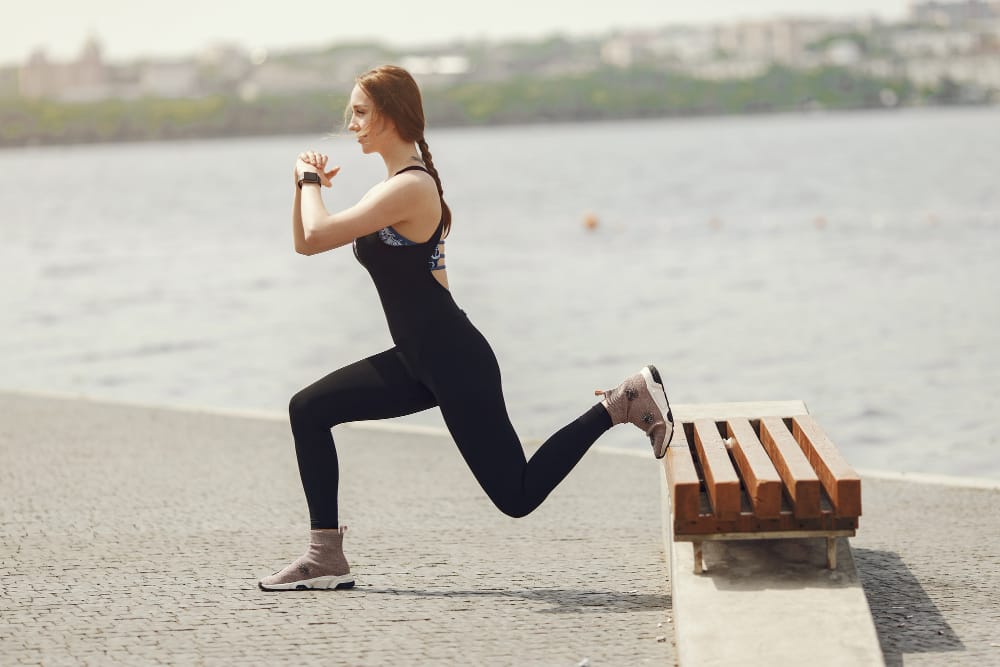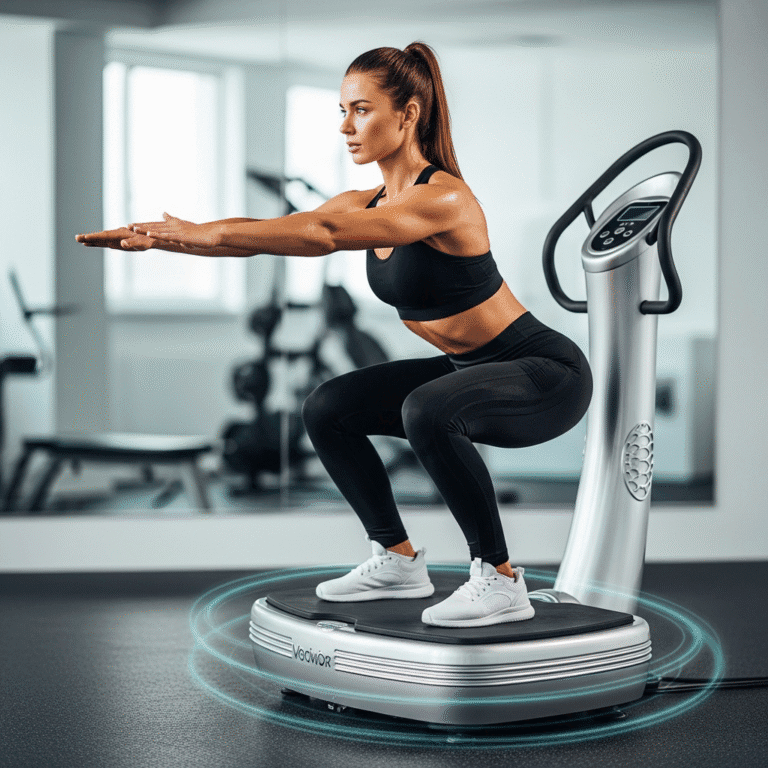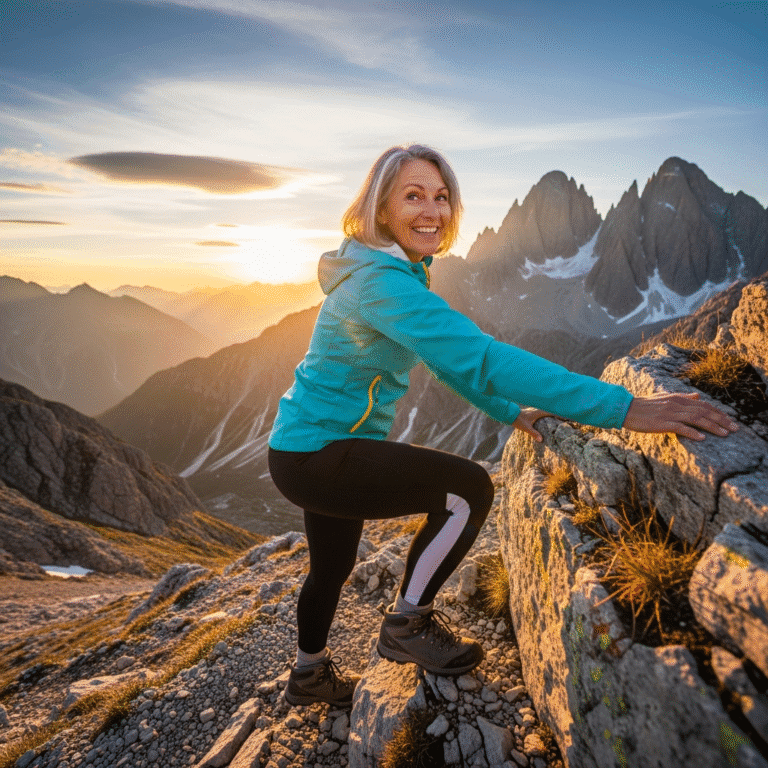FREE SHIPPING OVER $50
Forget Crunches: The Single Best Exercise for Bulletproof Core, Killer Quads & Powerful Hips (You’re Missing This!)
Let’s be honest, how many times have you planked until you shook, crunched until your neck ached, or done countless leg raises, all in pursuit of a stronger core, powerful legs, and sculpted hips? You’ve probably heard the advice about compound movements, but still, sometimes it feels like you need a dozen different exercises to target everything effectively.
But what if there was one, single, incredibly powerful exercise – a true hidden gem – that could build a bulletproof core, killer quads, and powerful hips all at once? An exercise so effective that top trainers and athletes swear by it for unparalleled strength and stability, yet it’s often overlooked in mainstream gym routines?
It’s time to stop wasting your time with endless crunches and discover the undisputed champion of functional strength: The Bulgarian Split Squat.
Why The Bulgarian Split Squat Reigns Supreme

At first glance, the Bulgarian Split Squat (BSS) might look intimidating. It’s essentially a lunge where your back foot is elevated on a bench or box. But don’t let its appearance fool you. This exercise is a powerhouse for several reasons:
- Unilateral Powerhouse (Single-Leg Strength): Unlike traditional squats where two legs share the load, the BSS forces one leg to do the majority of the work. This is crucial because in real life – walking, running, climbing stairs, playing sports – you’re almost always operating on one leg at a time. This unilateral training builds incredible strength, stability, and balance that translates directly to everyday activities and athletic performance.
- Core Activation Like Crazy: Because you’re in an unstable, single-leg position, your core has to work overtime to keep your torso upright and prevent you from toppling over. Your deep abdominal muscles, obliques, and lower back stabilizers all fire up to maintain balance and control throughout the movement. Forget crunches; the BSS is a dynamic core workout in itself.
- Killer Quads (and Glutes!): The elevated back foot allows for a deeper stretch in the front leg’s hip flexor, which in turn allows for a greater range of motion at the knee and hip of the working leg. This places immense tension on your quadriceps, driving serious growth and strength. Simultaneously, your glutes on the working leg get an incredible workout, helping you build powerful, sculpted hips.
- Hip Mobility and Stability: The BSS challenges and improves hip mobility, especially in the hip flexor of the trailing leg. It also strengthens the smaller stabilizing muscles around your hips, which are vital for preventing injuries and improving overall lower body function.
- Reduced Spinal Compression: Compared to heavy barbell squats or deadlifts, the BSS puts less direct compressive load on your spine. This makes it a fantastic option for those who might have back sensitivities but still want to build serious lower body strength.
- Fixes Imbalances: Many people have strength discrepancies between their left and right sides. Because the BSS works each leg independently, it helps identify and correct these imbalances, leading to more symmetrical strength and reduced injury risk.
- Versatility and Progression: You can do this exercise with just your bodyweight, hold dumbbells, a kettlebell, or even use a barbell. This makes it incredibly versatile for all fitness levels, allowing for continuous progression.
Mastering the Bulgarian Split Squat: Your Step-by-Step Guide
Proper form is paramount to get the most out of the Bulgarian Split Squat and avoid injury. Take your time to master the movement before adding heavy weight.
Setup:
- Find Your Bench/Box: Use a sturdy bench, box, or step that’s about knee-height (or slightly lower if you’re a beginner).
- Position Yourself: Stand about two to three feet in front of the bench. Turn around and place the top of one foot (laces down) onto the bench behind you. Your back foot should be relaxed, not actively pushing.
- Find Your Stance: The distance of your front foot from the bench is crucial. If it’s too close, your front knee will travel too far forward. If it’s too far, you might not be able to get deep enough. A good rule of thumb is that when you descend into the squat, your front shin should be relatively vertical. Adjust until you feel balanced.
- Posture: Stand tall. Keep your chest up, shoulders back and down, and core engaged. Look straight ahead. Your hands can be on your hips, clasped in front of you, or holding weights.
The Movement:
- Descend: Slowly lower your back knee straight down towards the floor. Focus on letting your front knee track over your midfoot, ensuring it doesn’t collapse inward or outward. Your torso should remain relatively upright, leaning slightly forward from the hips as needed for balance.
- Depth: Aim to descend until your front thigh is parallel to the floor, or your back knee hovers just above the ground. Only go as deep as you can maintain good form and without pain.
- Ascend: Drive through the heel and midfoot of your front leg to push yourself back up to the starting position. Squeeze your glute at the top.
- Control: Perform the movement slowly and with control, especially on the lowering (eccentric) phase. Avoid bouncing at the bottom.
- Repetitions: Aim for 8-12 repetitions per leg. Then switch legs and repeat.
Common Mistakes to Avoid:
- Leaning Too Far Forward: This shifts the load away from your quads and glutes and can strain your lower back. Keep your chest up.
- Front Knee Caving In: This indicates weak hip abductors and puts stress on your knee joint. Actively push your front knee slightly outward, in line with your toes.
- Back Foot Too Active: Your back foot is for balance, not for pushing. Keep it relaxed.
- Too Much Weight, Too Soon: Master bodyweight form first. Adding weight to poor form is a recipe for injury.
- Rushing the Movement: Control is key. Slow and steady wins the strength race here.
How to Integrate the Bulgarian Split Squat into Your Routine
The beauty of the Bulgarian Split Squat is its versatility. You can use it as a primary lower body exercise or as an accessory movement.
- As a Primary Lift: If you’re short on time or equipment, make it your main leg exercise. Perform 3-4 sets of 8-12 reps per leg, with adequate rest between sets (60-90 seconds).
- With Weights: Once you’ve mastered bodyweight, start with light dumbbells in each hand. As you get stronger, you can progress to heavier dumbbells, a kettlebell (goblet style), or even a barbell on your back (advanced).
- Frequency: Incorporate it 1-2 times per week into your strength training routine.
Why You’re Missing This (And Why It’s Time to Stop)
The Bulgarian Split Squat isn’t as flashy as a heavy barbell squat or as seemingly simple as a leg press. It challenges your balance, demands focus, and makes you truly feel the burn in your quads and glutes. For these reasons, many people avoid it, opting for “easier” or more familiar machine-based exercises.
This single exercise, performed correctly, can truly revolutionize your lower body strength, core stability, and overall athletic capability. So, next time you’re planning your leg day, forget the crunches and think beyond the basic squats. Step up to the bench, master the Bulgarian Split Squat, and unlock the incredible power that’s been waiting for you.
Related Articles
- This Gym Machine Is Destroying Your Body (And You’re Probably Using It Wrong)
- 7 Secret Exercises for Bigger, More Defined Muscles—Are You Missing These?
- From Wheelchair to Walking: 7 Exercises That Saved My Joints at 60
- The 7 Workouts Ruining Your Progress (90% of People Do It, Says Physical Therapist)
- This Old-School 20-Rep Squat Routine Is Still the Most Savage Leg Workout Ever



